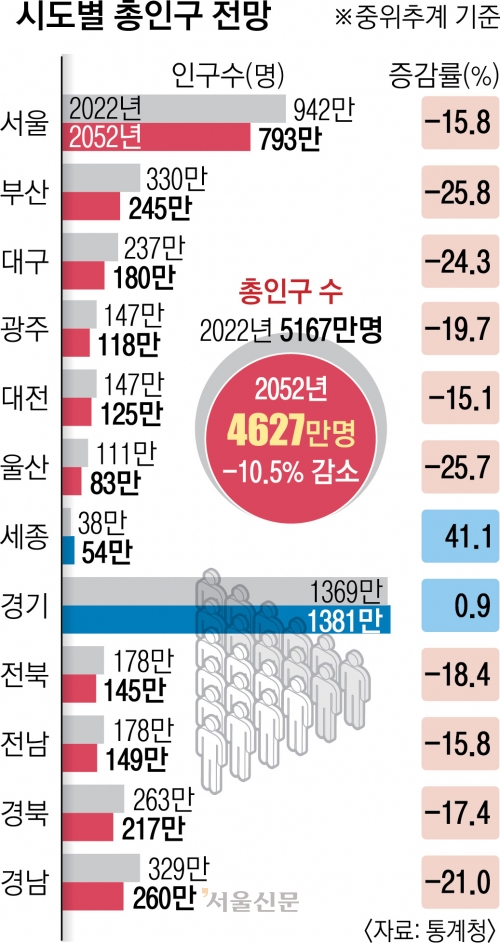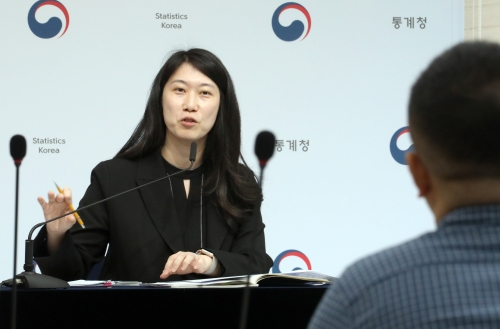Statistics Korea announces “Future Population Estimates by Region”
In 2052, Seoul’s population is projected to decrease by 1.49 million
All regions expected to experience natural population decline 21 years later,

, ‘Analyses suggest that in 30 years, with the exception of Gyeonggi-do and Sejong, all regions will experience a decrease in population. Due to low birth rates and an aging population, the proportion of elderly individuals aged 65 and above is expected to increase in all regions, with Jeollanam-do and Gyeongsangbuk-do projected to reach almost 50% of the population being elderly.’,
,
, ‘On the 28th, Statistics Korea released the “Future Population Estimates by Region: 2022-2052” report. Reflecting recent trends in births, deaths, and population movements, Statistics Korea predicted the future populations of each region. By 2052, it is predicted that the total population of Sejong and Gyeonggi-do will increase by 160,000 and 120,000, respectively, compared to 2022. Meanwhile, Seoul (-1.49 million), Busan (-850,000), Gyeongnam (-690,000), and 15 other regions are expected to see a decrease in total population. In terms of decline rate, Busan and Ulsan are each expected to decrease by 25.8% and 25.7%, meaning one out of every four people is projected to decrease in population by 2022.’,

Onnuri, head of Statistics Korea’s Population Estimates Team, explaining regional future population estimates from 2022 to 2052 on the morning of the 28th at the Government Sejong Office. Yonhap News, ‘Starting 17 years from now, except for Sejong, population decline is expected in all regions. Statistics Korea predicted that from 2022, in 11 regions including Seoul and Busan, and from 2039 in 16 regions excluding Sejong, total population will experience negative growth. While Gyeonggi-do is projected to increase from 13.69 million in 2022 to 14.52 million in 2038, it will then decrease to 13.81 million by 2052. This amounts to only a 0.9% (120,000) increase compared to 2022. If we exclude regional population movements, natural population decline, where deaths outnumber births, is expected in all regions including Sejong starting in 2045.’,
,
, ‘It appears difficult to avoid entering a super-aged society where 20% of the population is aged 65 and over. The elderly population, which is steadily increasing, is projected to more than double from 2022 to 2052 in 11 regions including Sejong and Gyeonggi-do. In particular, Jeollanam-do and Gyeongsangbuk-do are expected to expand their proportion of elderly population to 49.6% and 49.4%, respectively, nearing half of the total population being elderly. The working-age population (ages 15-64) is expected to decline in all regions except Sejong, with Ulsan anticipated to experience a 49.9% decrease by 2052 due to the stagnation of the shipbuilding industry.’, ‘ MobileAdNew center ‘,

